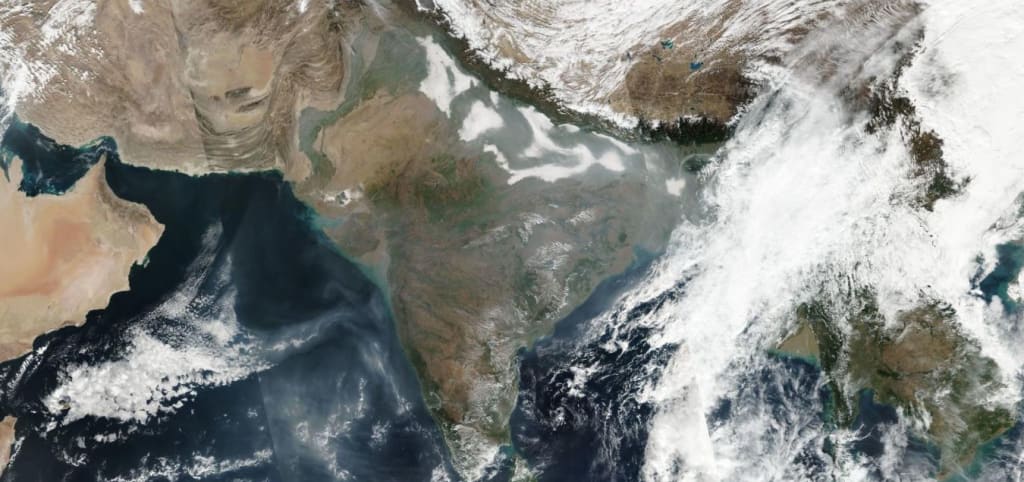Paleoanthropology in India
The Secrets She Must Hold

The country of India is truly unexplored when it comes to hominin fossils. As can be seen from the photo above, it must have been a major corridor in the migration of hominids from the Arabian Peninsula to South East Asia and beyond to Australia. But where is the evidence? If the truth is told, there is a paucity of evidence that has been found in India. The most famous, and nearly the only fossils found are those from the Narmada Valley, located at nearly mid-point north, south, east, and west. The fossils are calvaria (skull caps) and a few postcranial bones. The remains indicate that these were a small pygmy type hominin, possibly the ancestors of the enigmatic Andaman Island group of "Negritos" or perhaps Homo floresiensis. The Andaman Islands are populated by Negritos who are very small. It is not known when the Islands were first inhabited by anyone. Estimates go from 70kbp to 2kbp, but it is possible they are older than some think. At least one island has kept intruders out completely. Answers are not forthcoming yet, and genetic evidence is only available from islanders accepting of researchers.
ANDAMAN ISLANDERS

Many physical anthropologists and others believe the Northern Route would have been preferential in gaining access to South East Asia. However, there are several stumbling blocks along this route. If you look at the opening photograph, you can clearly see the Indo-Gangetic floodplain in the northwest corner of the subcontinent, where Pakistan and India meet. The first problem a migration would incur is the fact that floodplains have a habit of flooding. This means getting around moving water and dealing with water assisted diseases like Malaria. Floodplains are also bereft of the rock material needed to make tools. Intrepid explorers that made headway in this direction would also have had to deal with the cold. There are mountains to cross and The Last Glacial Maximum to deal with. Another issue is food. Megafauna would have abounded but they are difficult and dangerous to hunt. The smaller prey would have been in more suitable weather climes, farther south. In spite of this a dedicated group might have made it through, but no one is looking for fossils there. That leaves the Southern Route. In the photograph at the top of this article, you can see how close the Arabian coast is to India. There, down India's west coast, you can find the continental shelf now under water. Hominins could have followed the coast all around the subcontinent without any impediment to travail. Once farther south, they could travel inland as well, without having to deal with the mud, disease, water and food issues of the northern floodplain. Following the coastline would mean a smorgasbord of seafood and fish for the taking. The coastal route would have led hominins directly to South East Asia and to all points east. Groups that moved inland would have warmth and smaller, less dangerous game. There would have been stones and shells aplenty for making tools, and wood for fires. There is no evidence for any of this because paleoanthropology isn't being accomplished in India. People native to India and Westerners alike need to turn their attention to this country. India holds secrets we must unravel if we are ever to understand hominin migration patterns. This is beyond urgent. Every working season that passes means valuable fossils and knowledge are lost. Information on Paleoanthropology in India can be found online. If anyone out there wants to make a name for themselves in this field, India should be a huge contender for attention. It is the true crossroad of humanity, and no one has breached its wonderful secrets yet.
About the Creator
Monica Bennett
I am a retired high school and college teacher. I have taught forensics, biology, chemistry, ecology, and Earth science.. Long Island has been my home for 60 years.






Comments
There are no comments for this story
Be the first to respond and start the conversation.